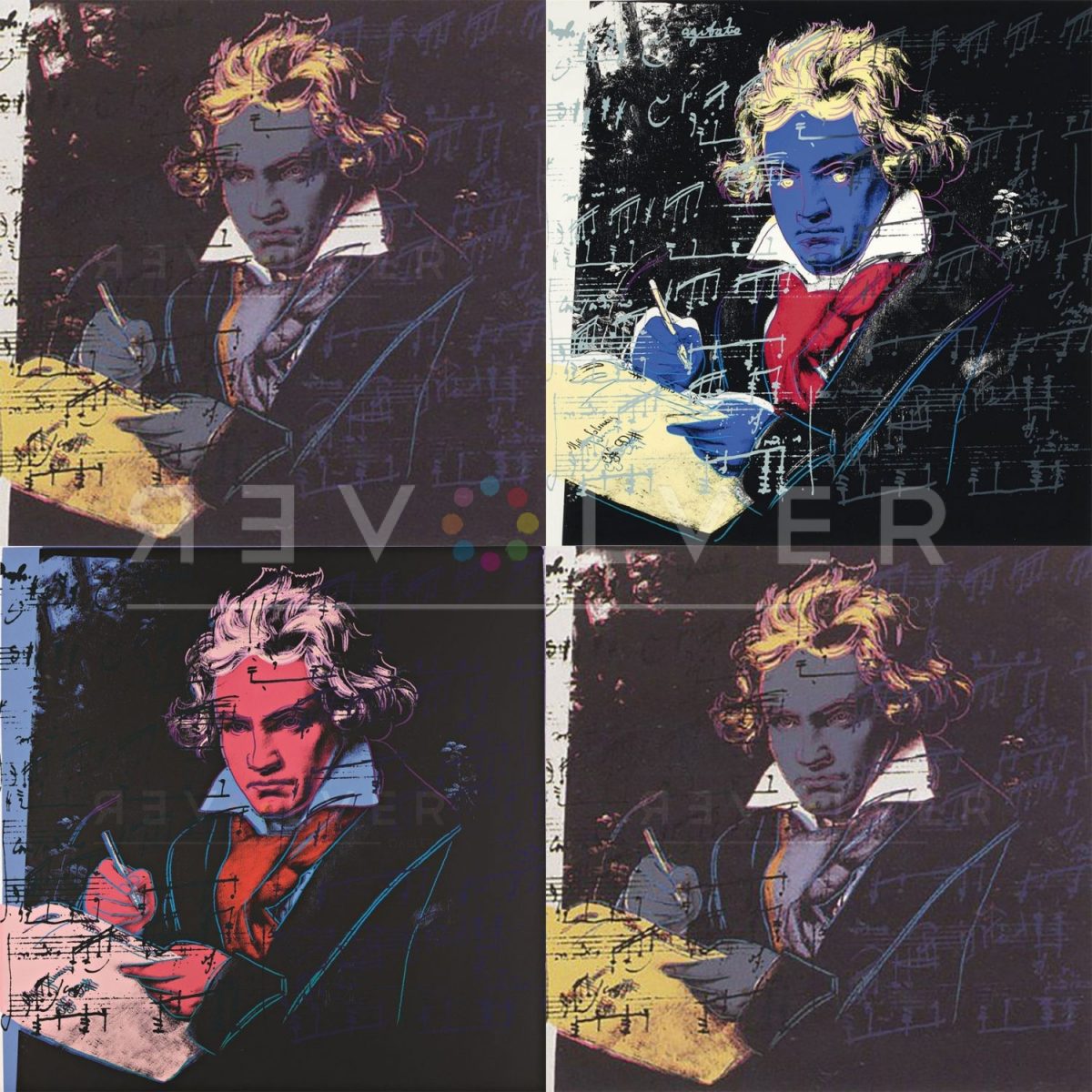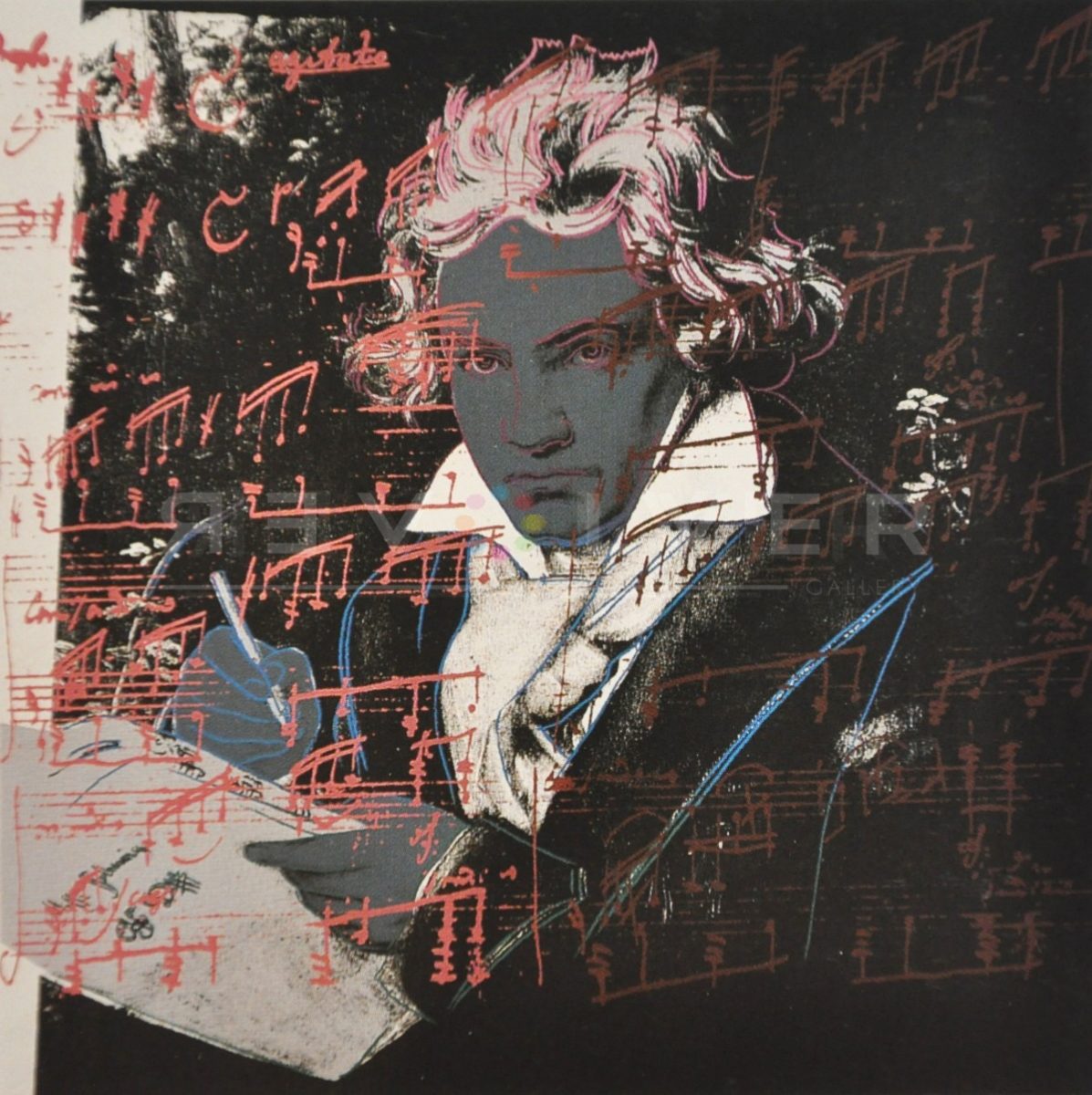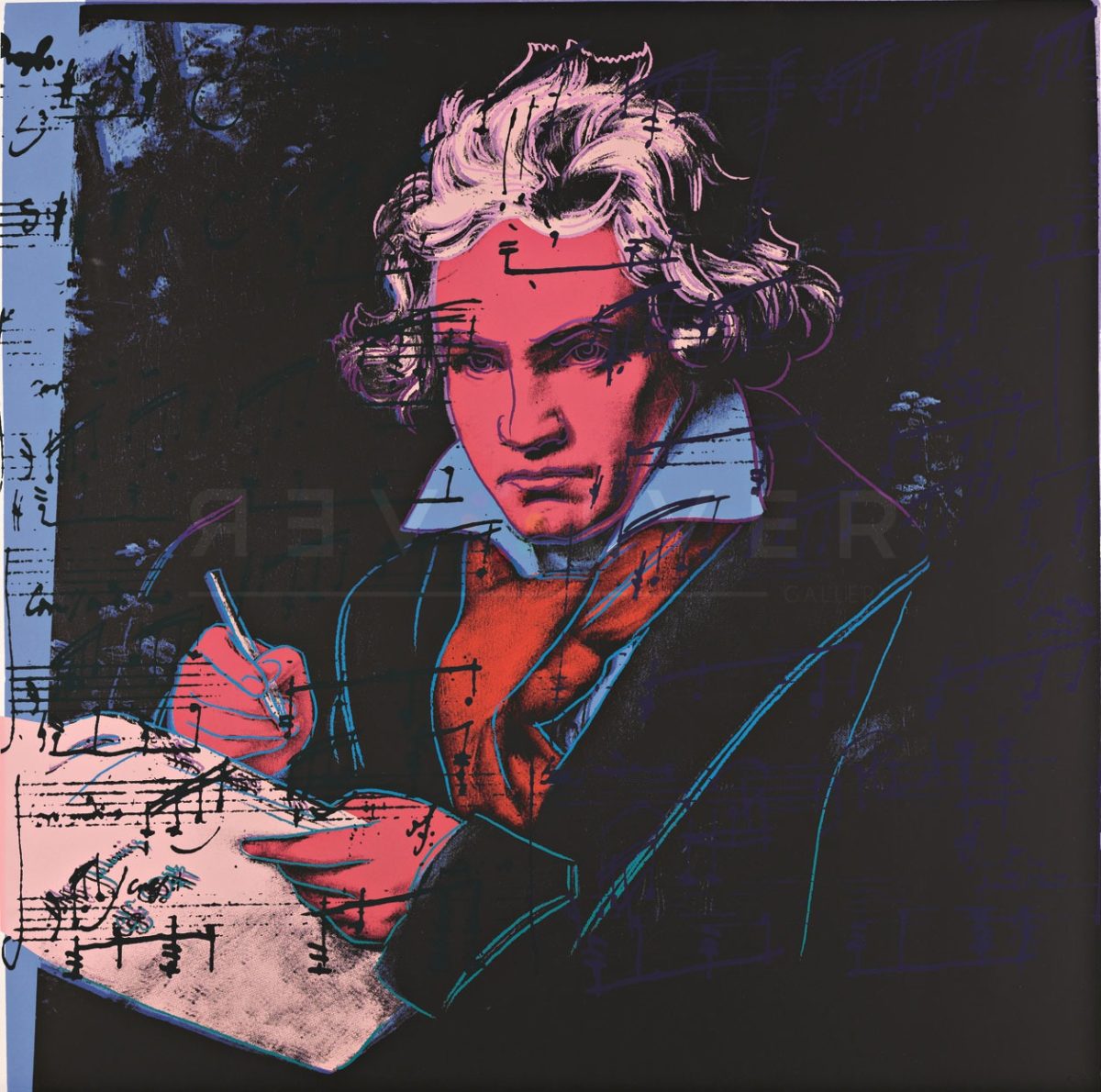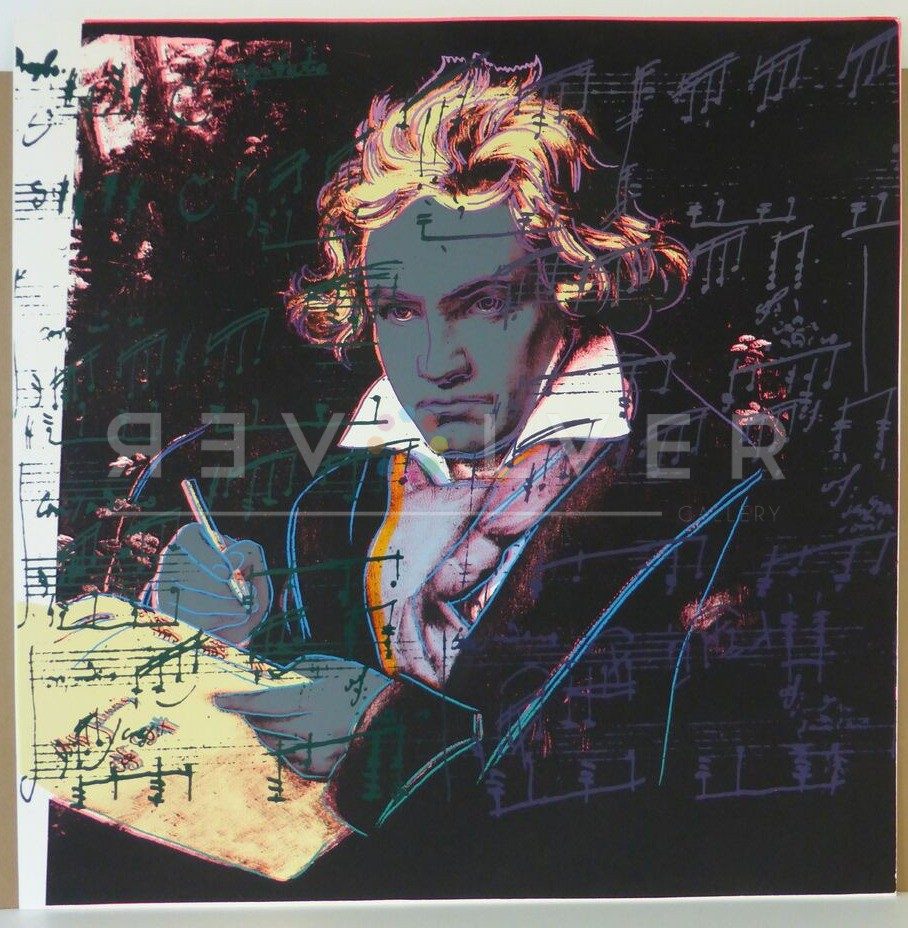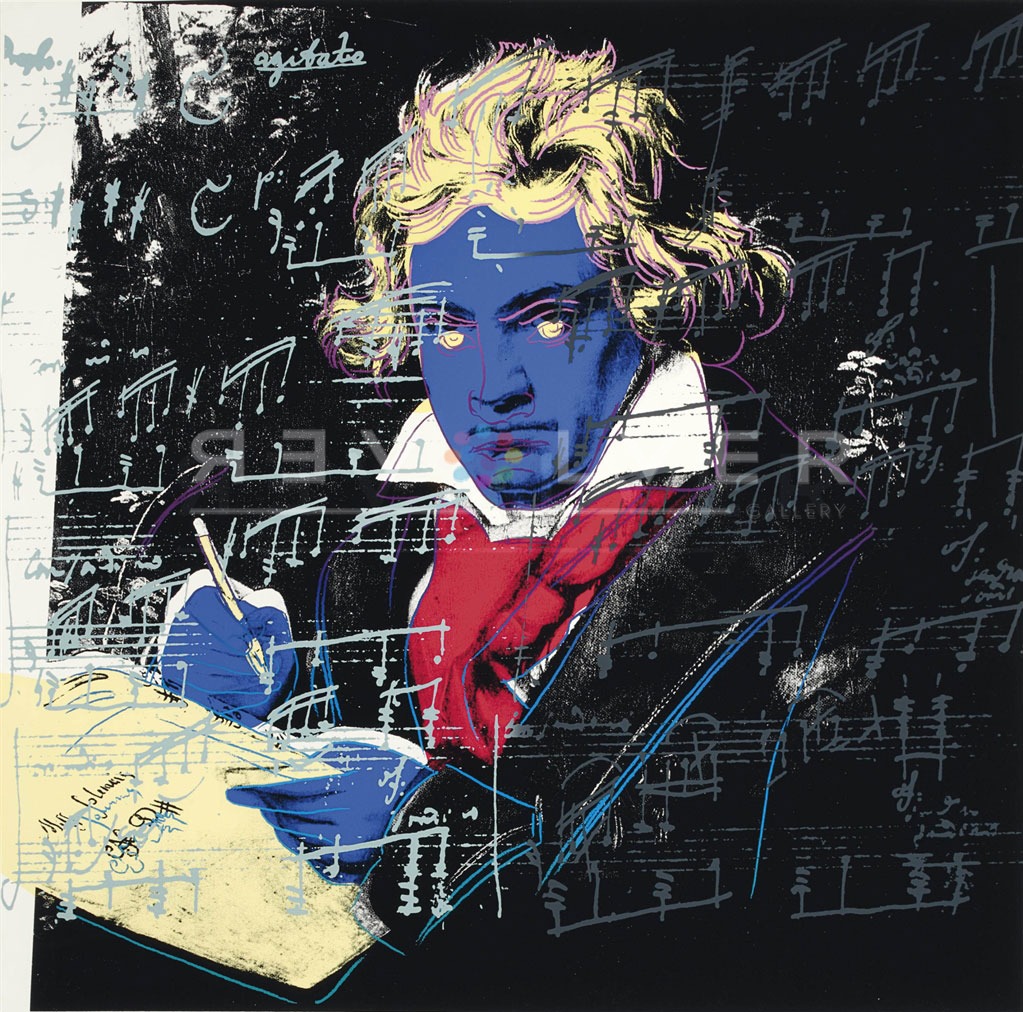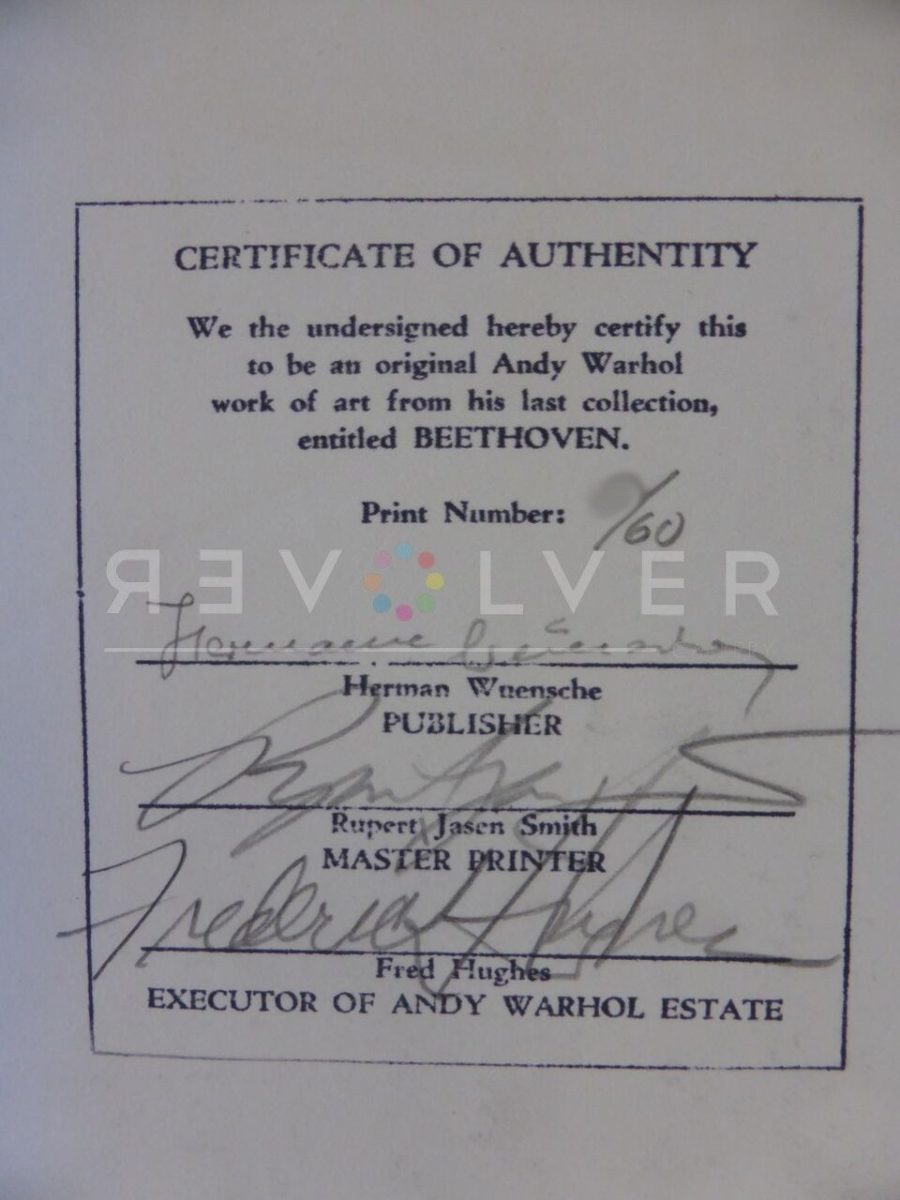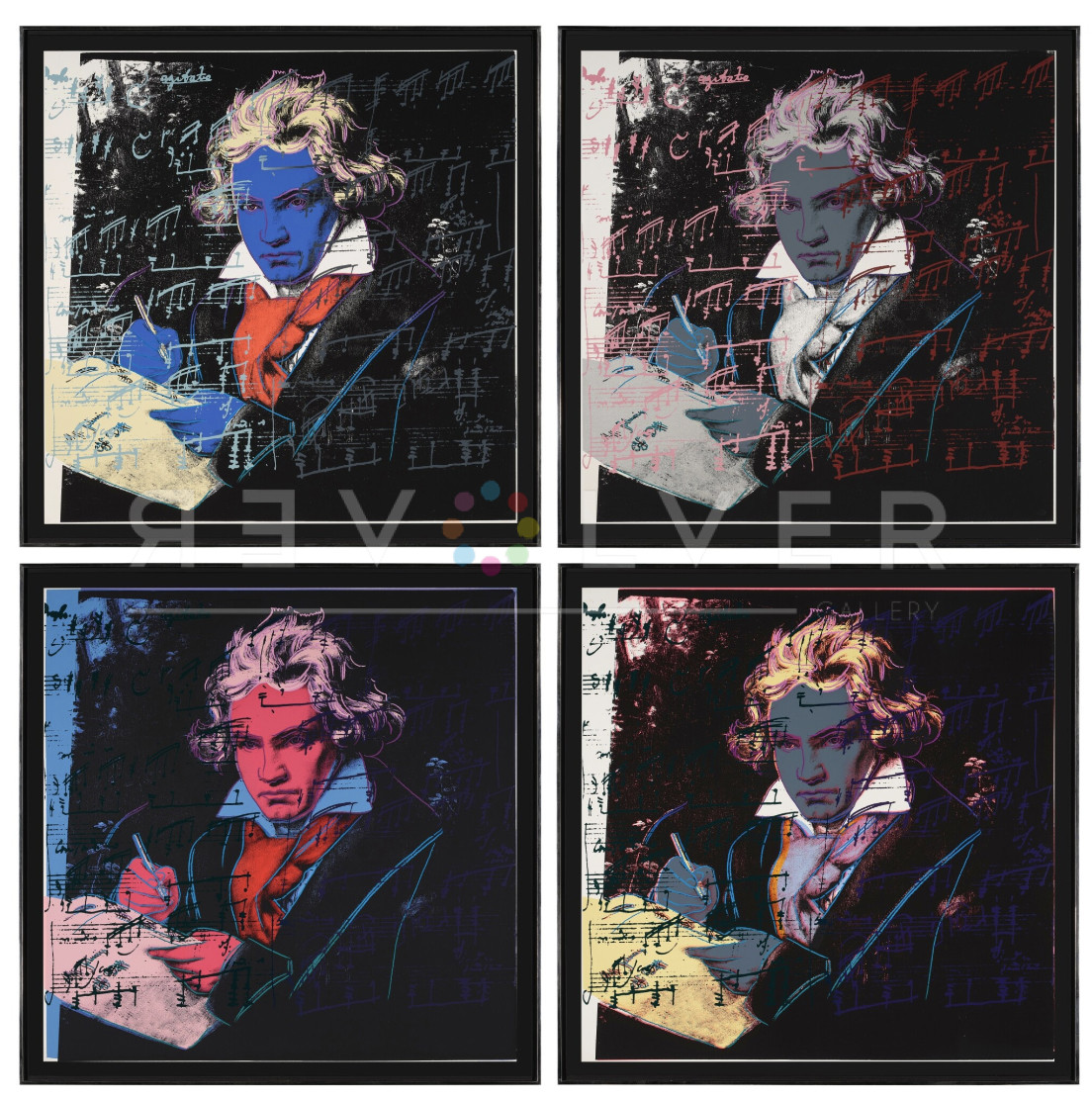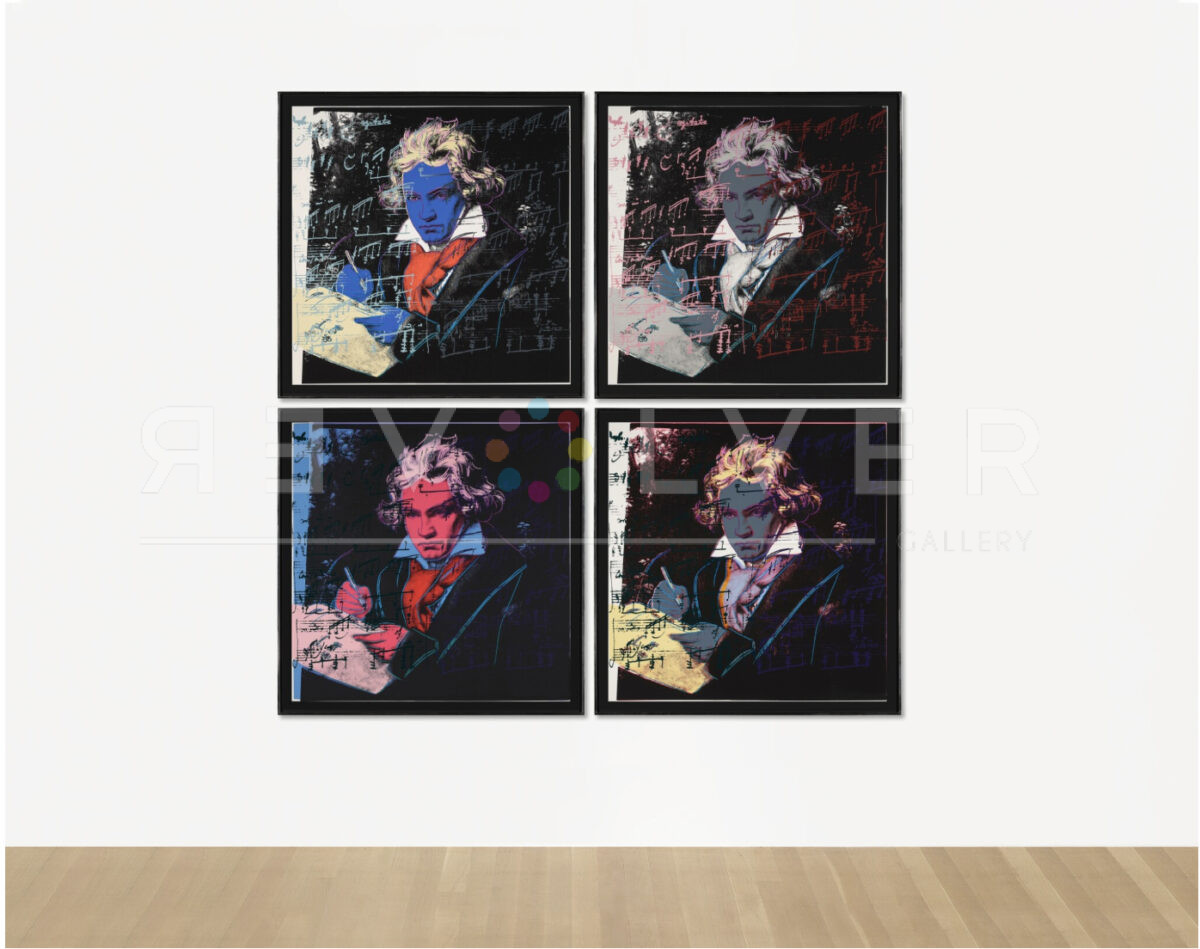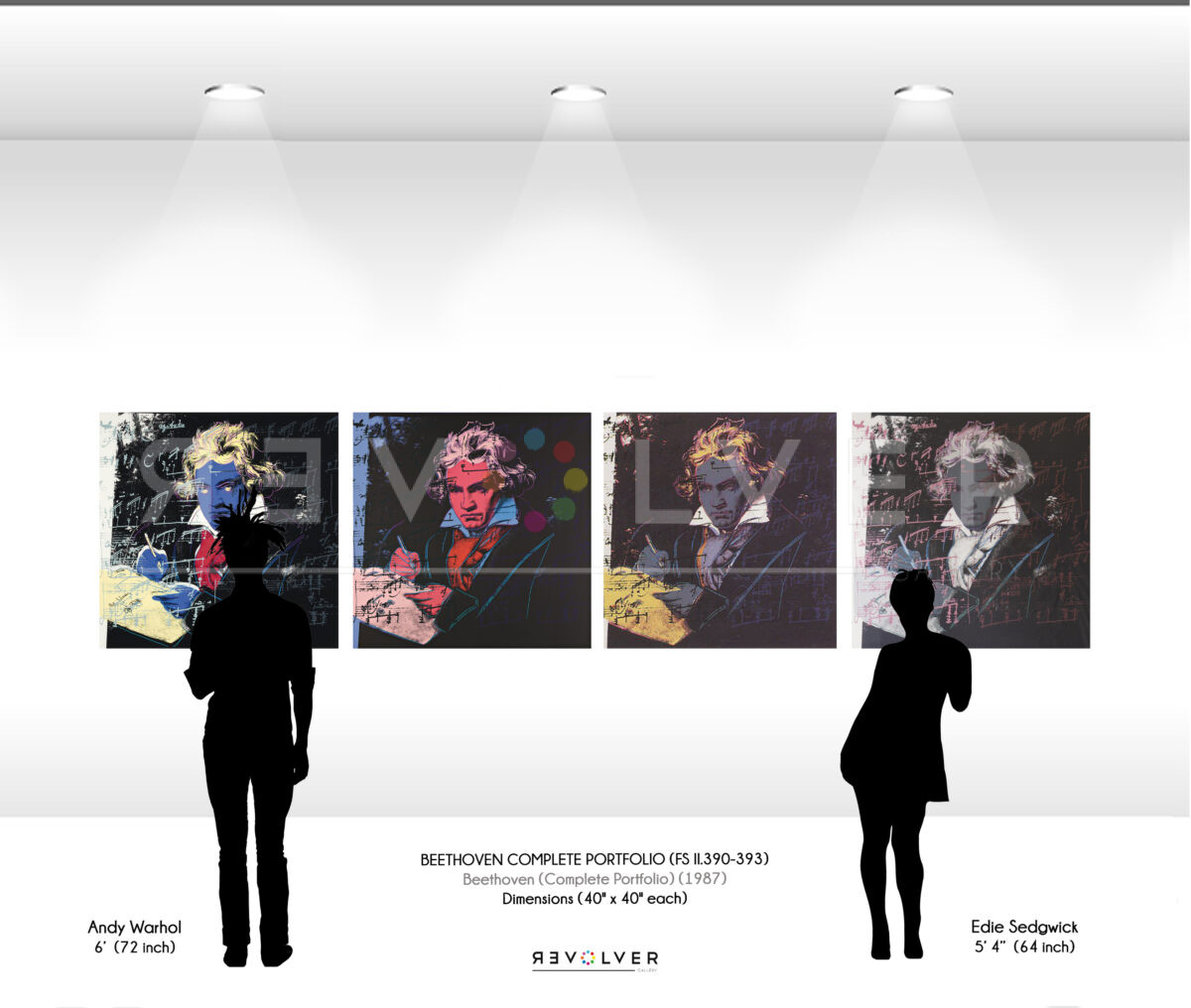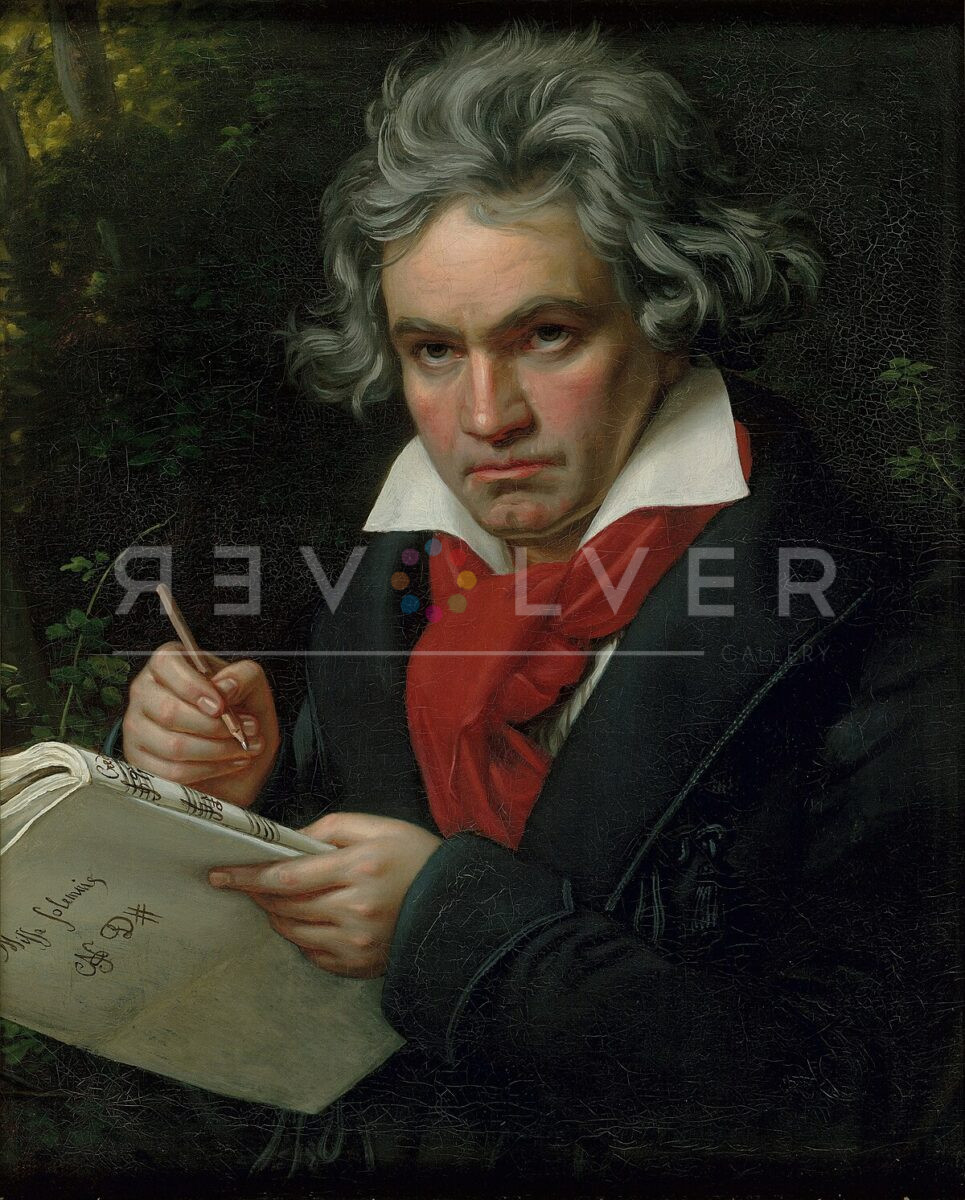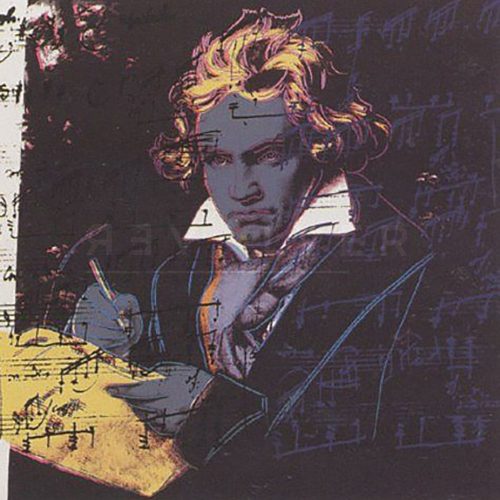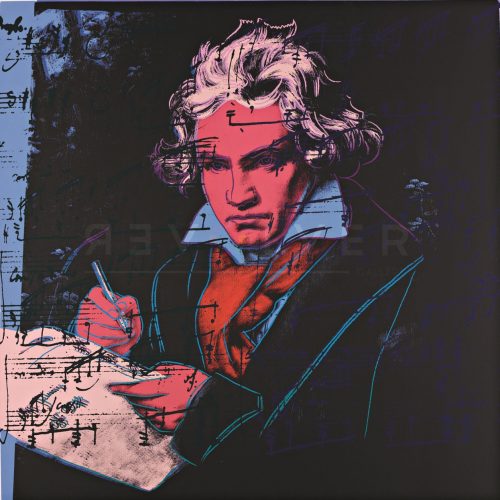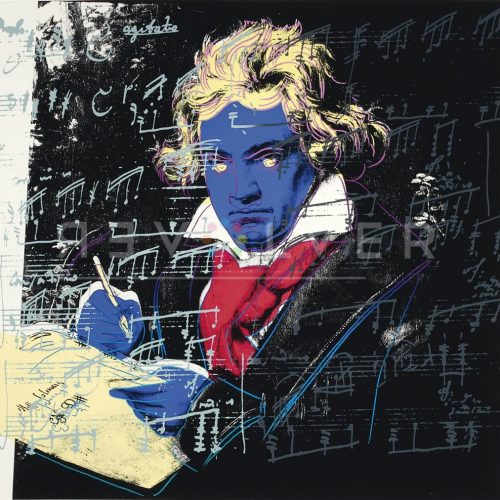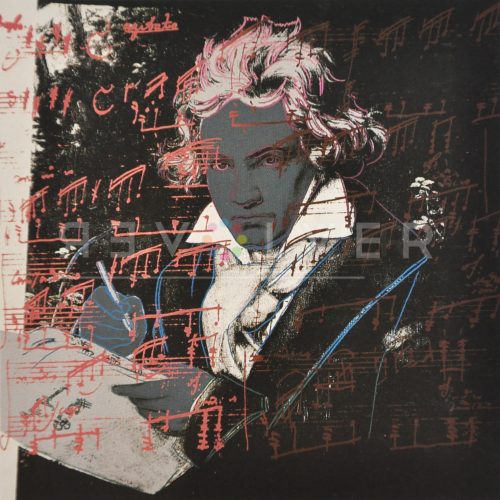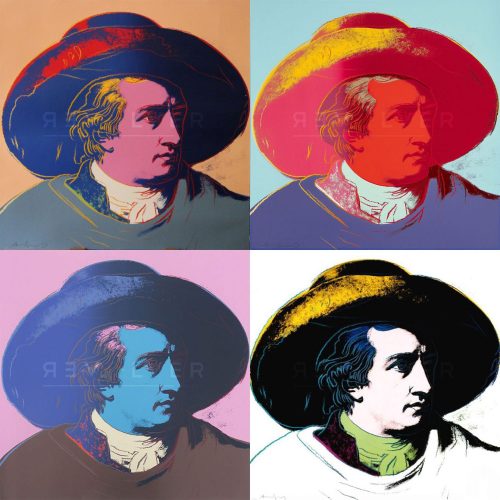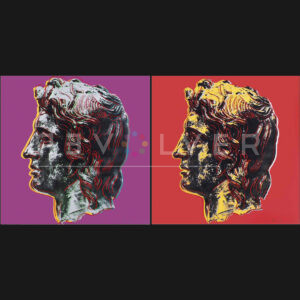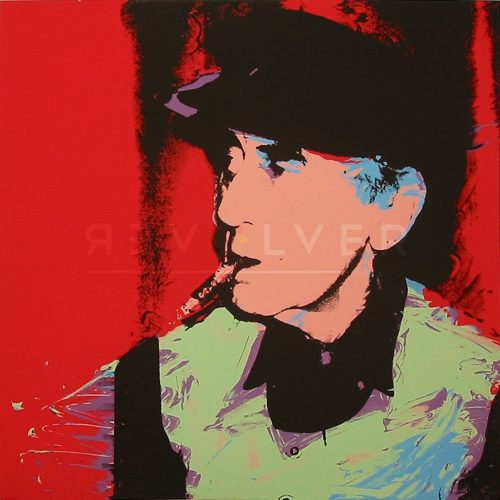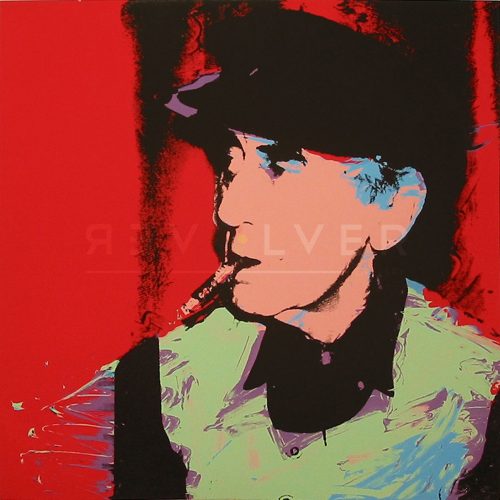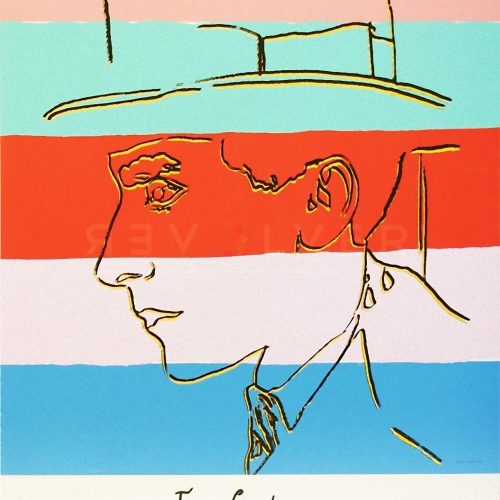The Beethoven complete portfolio by Andy Warhol is one of the many unique portfolios Warhol created late in his career right before his passing. The portfolio consists of four screenprints of the nineteenth-century composer portrayed in Pop Art style.
For the Beethoven complete portfolio, Warhol references the 1820 portrait of Beethoven painted by Joseph Karl Stieler. The notable portrait by Stieler shows Beethoven in the midst of creating a composition with pen and music sheet in hand. Each portrait uses the same image of Beethoven depicted through various colors, ranging from vibrant reds to deep grey hues. Warhol features Beethoven’s composition Sonata No. 14, known as Moonlight Sonata, across each portrait. The four-part Beethoven portfolio rests on Lenox Museum Board, while one unique edition is printed as a Camouflage trial proof. Rupert Jansen Smith printed the portfolio in New York, which was originally published by Hermann Wunsche in Bonn, Germany.
Warhol maintains the appearance of Beethoven’s figure as referenced in Stieler’s portrait of him. While portraying Beethoven’s distinct focused gaze and tousled hair in the same manner, Warhol departs from the realistic style. He presents Beethoven’s figure and complexion through solid colors and delicate outlines. The varying hues and color spectrum that accompany Beethoven’s figure contrast against the black background featured in all four prints. Warhol’s incorporation of subtle outlines throughout his portraits further emphasizes the features of Beethoven’s figure and pose. (One may notice similar outlining in the Ingrid Bergman portfolio.)
Alongside the subtle outlines, the incorporation of Sonata N.14, seen placed across his portrait, creates a unique effect, allowing the piece to further echo Warhol’s style. This addition reflects Beethoven’s magnum opus and his extreme fame, adding a new layer to the portrait aside from his figure. Sonata N.14 is one of Beethoven’s most praised compositions, globally acclaimed since 1801. The composition and melody influenced many great composers, such as Frederic Chopin and Carl Bohm decades later.
Andy Warhol’s Beethoven complete portfolio is unique from many of his past series. Many of his projects focused on pop culture celebrities and commercial imagery. Warhol, who classically centered his work around celebrities and figures like Marilyn Monroe, Mick Jagger, and Jacqueline Kennedy, departs from such subjects to present the nineteenth-century composer. However, it’s no surprise that Beethoven captured Warhol’s attention, due to his mighty influence, fame, and notoriety.
Not only did Beethoven’s work inform the music and culture of his time, but he left a massive lasting influence and paved the way for the evolution of music over time. Composing approximately 722 pieces and transforming the classical music style, Beethoven’s impact on the art of music and composition still resonates in the modern-day. The Beethoven complete portfolio is ultimately a quintessential indicator of Warhol’s artistic range, and the timelessness of his art.
The Beethoven Complete Portfolio as Part of Warhol’s Larger Body of Work
Warhol created this series in 1987, shortly before his death, as he began to choose subjects that weren’t typical of his previous style. It is perhaps the suffering of Beethoven in contrast to his great posthumous fame that spoke to Warhol. The series is particularly unique in that it contradicts the common perception that Warhol’s subject matter was limited to movie stars and grocery store items. The Beethoven complete portfolio consists of four screenprints, which feature the same repeated image of Beethoven in different color variations, and remains one of the most veritably dynamic series of Warhol’s collection.
Photo credit: Portrait of Beethoven with the manuscript of the Missa solemnis by Joseph Karl Stieler, 1820.

